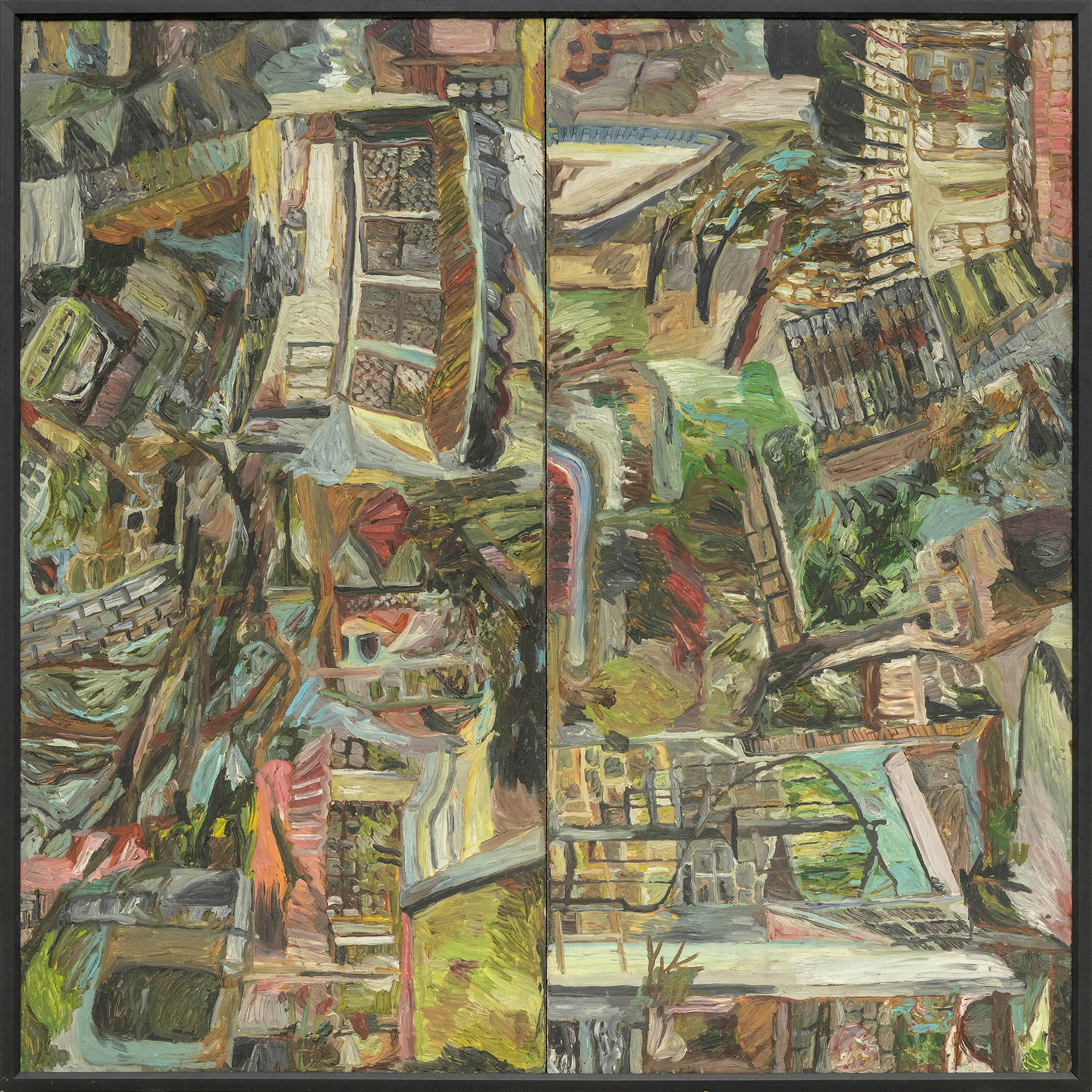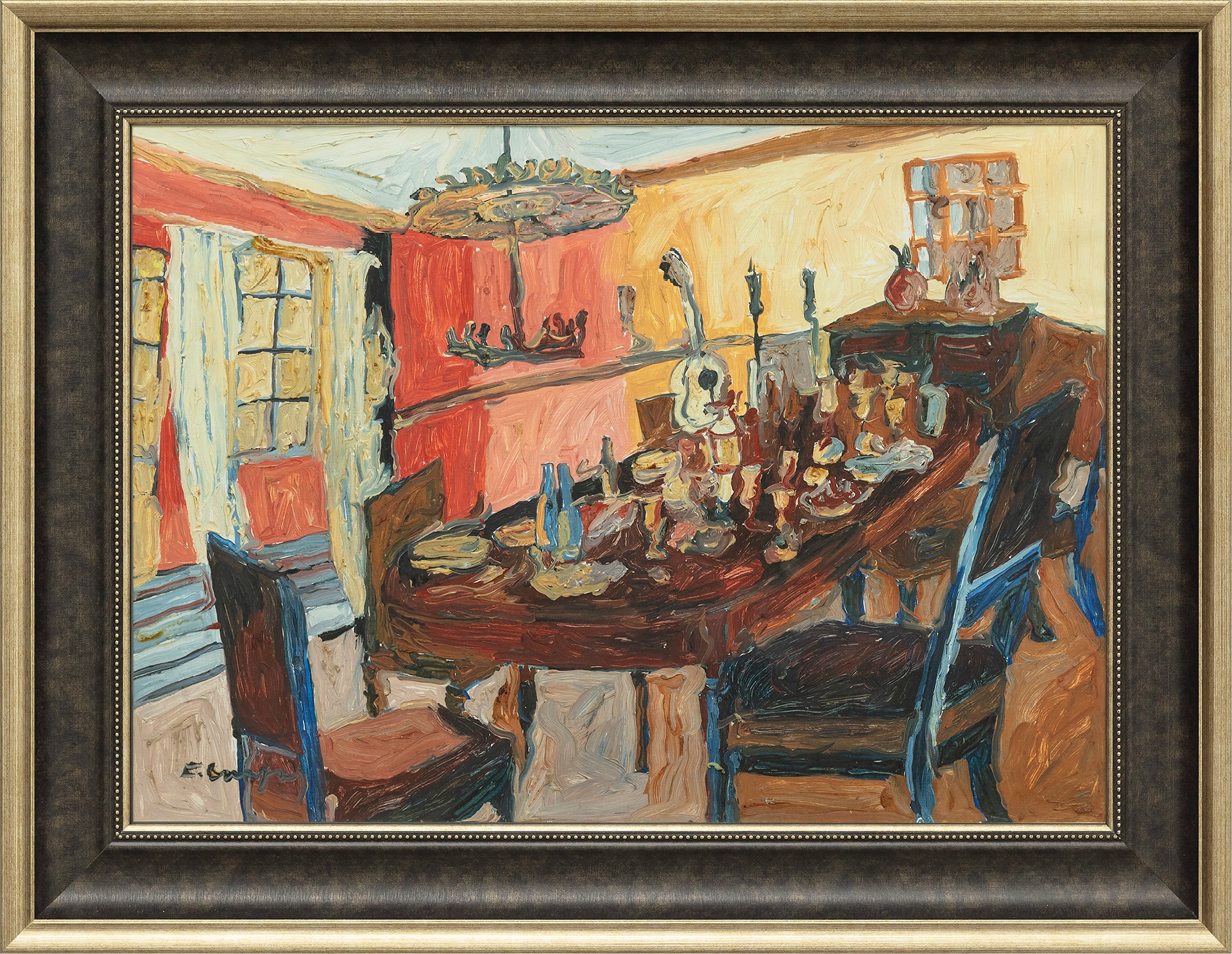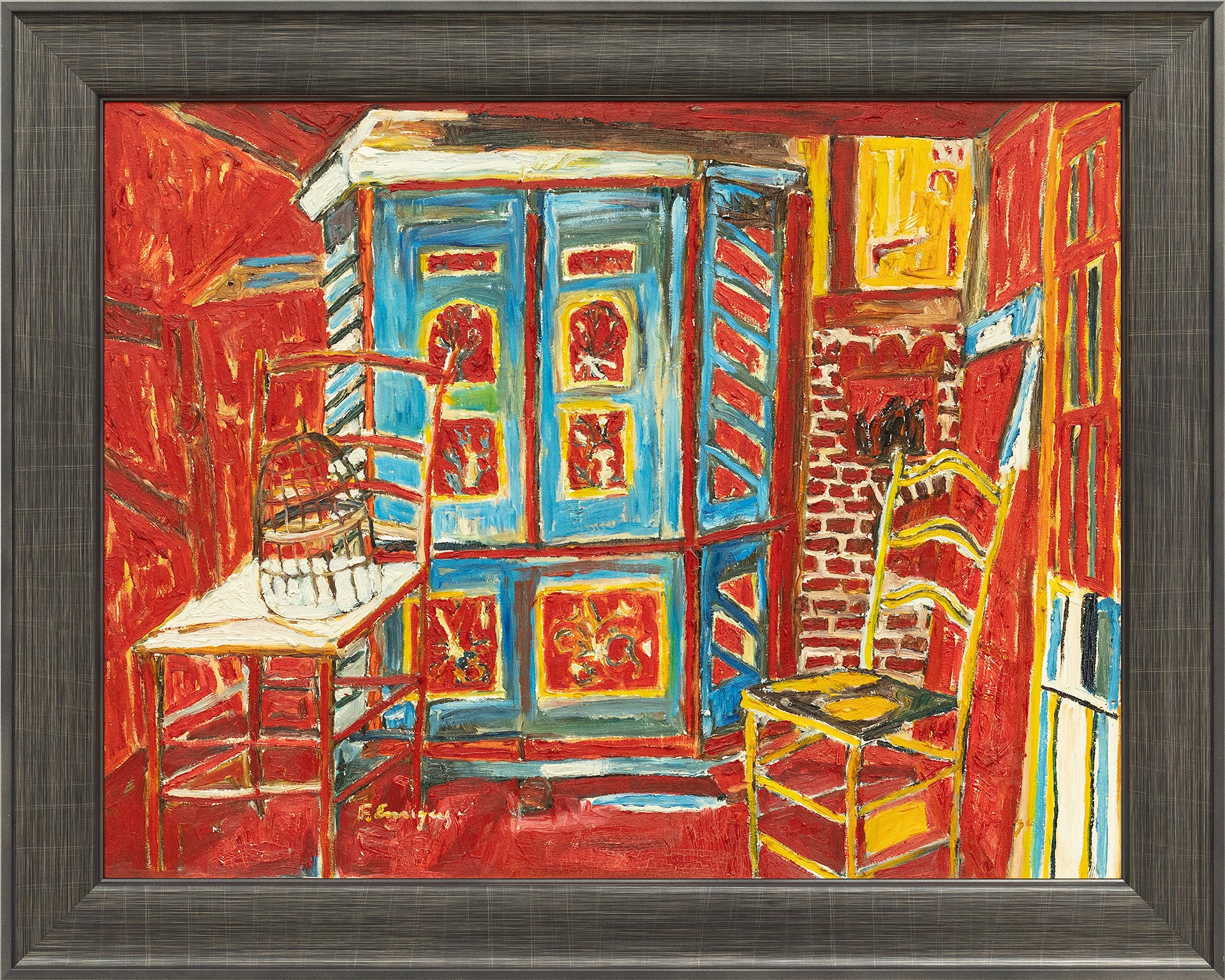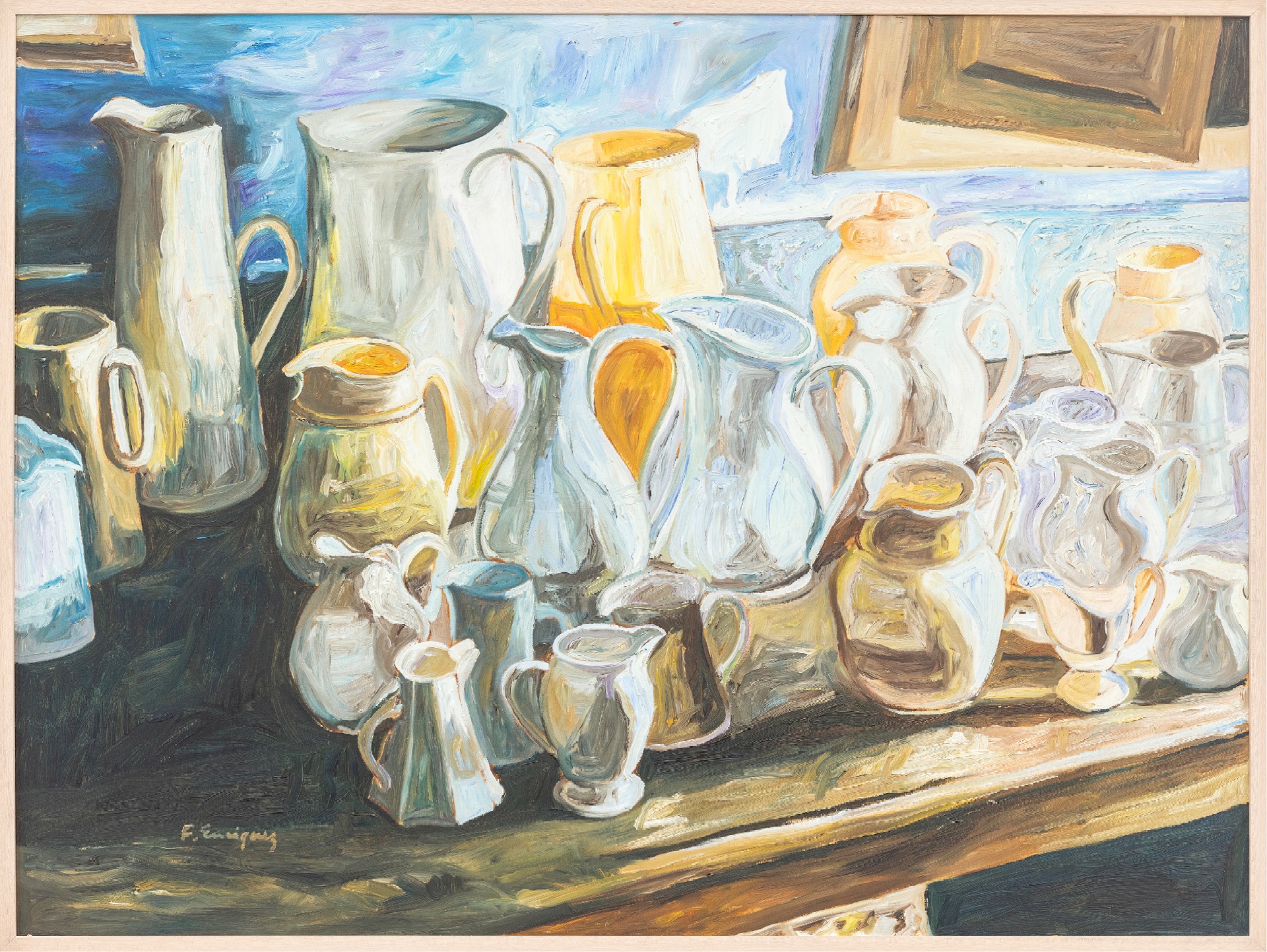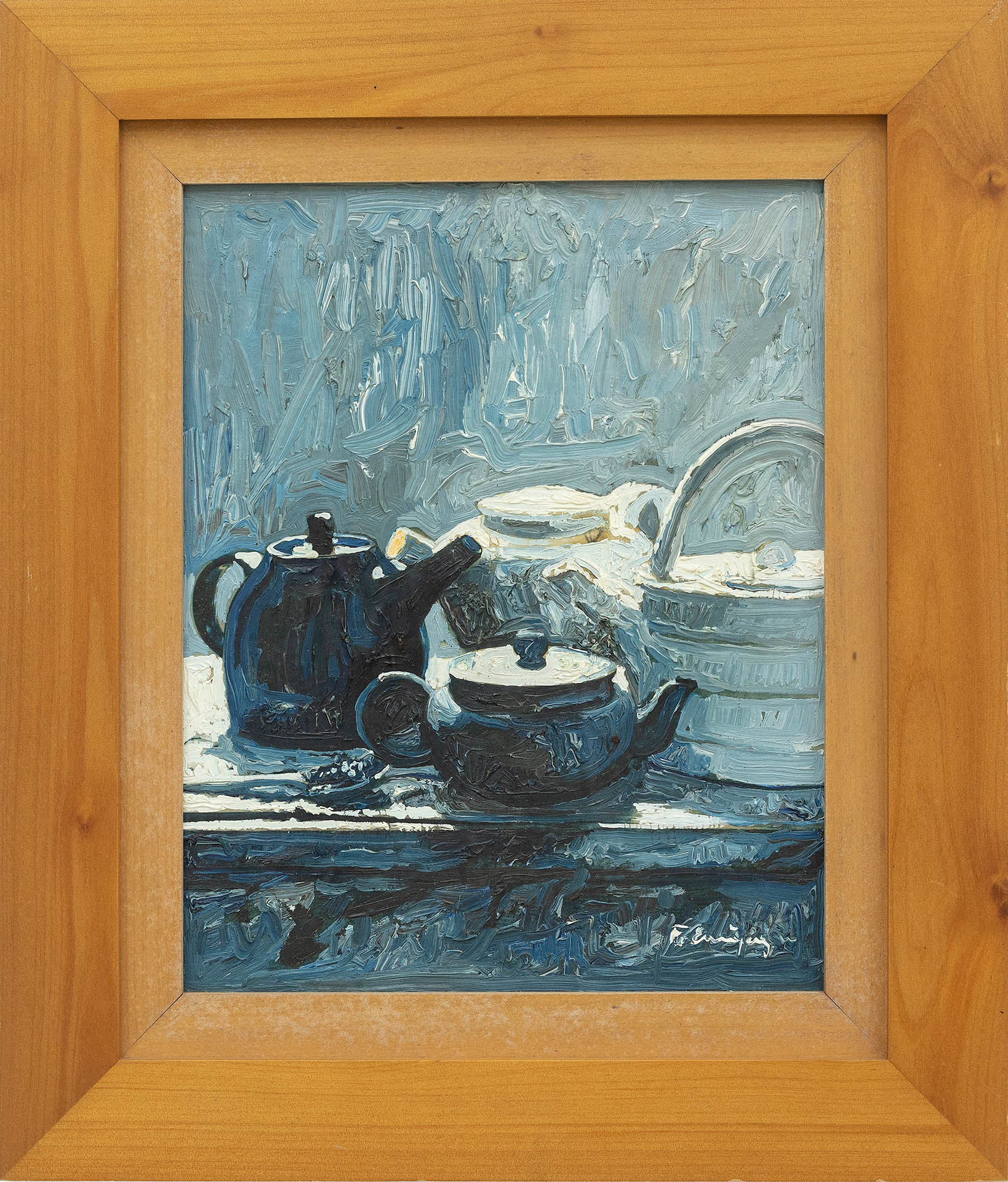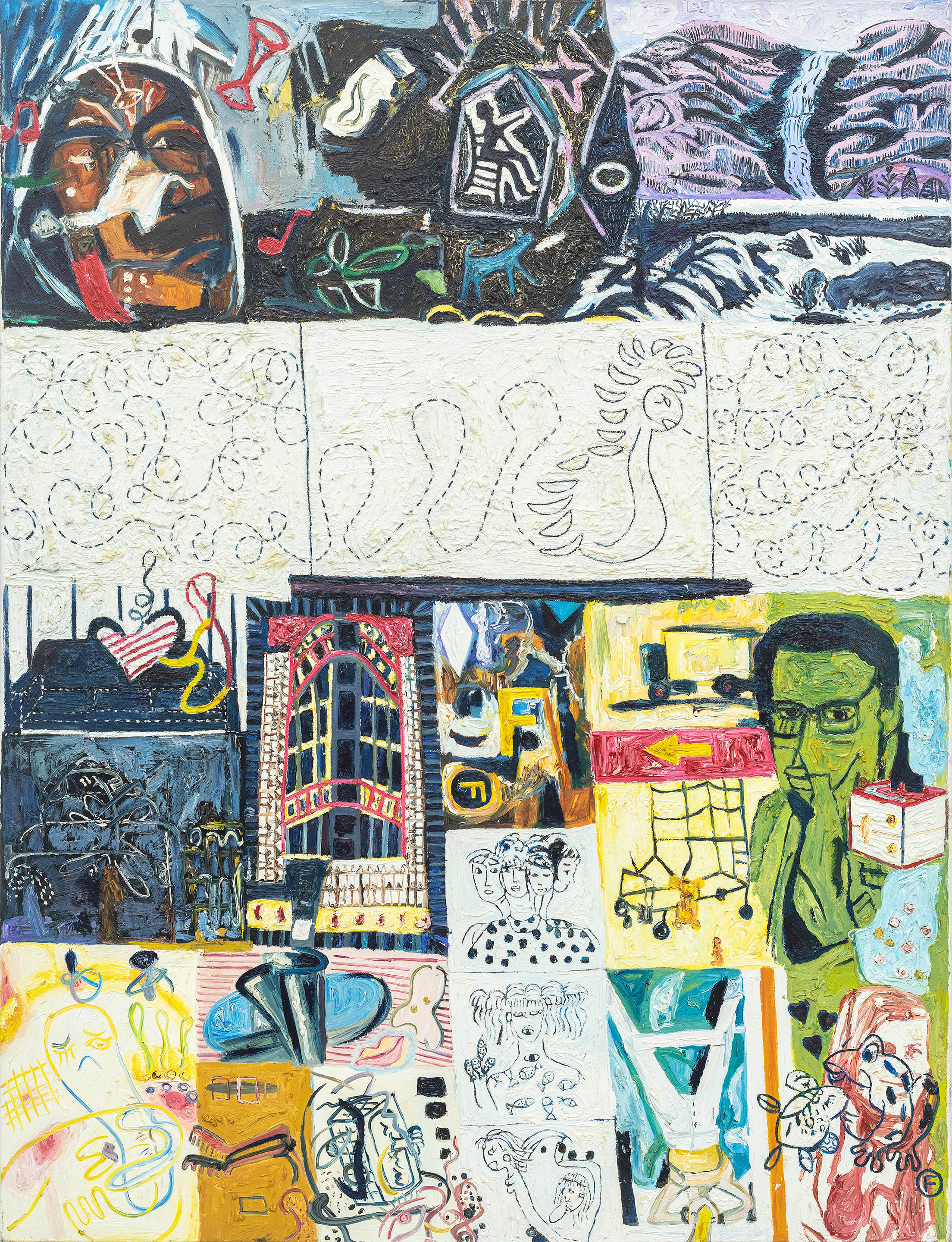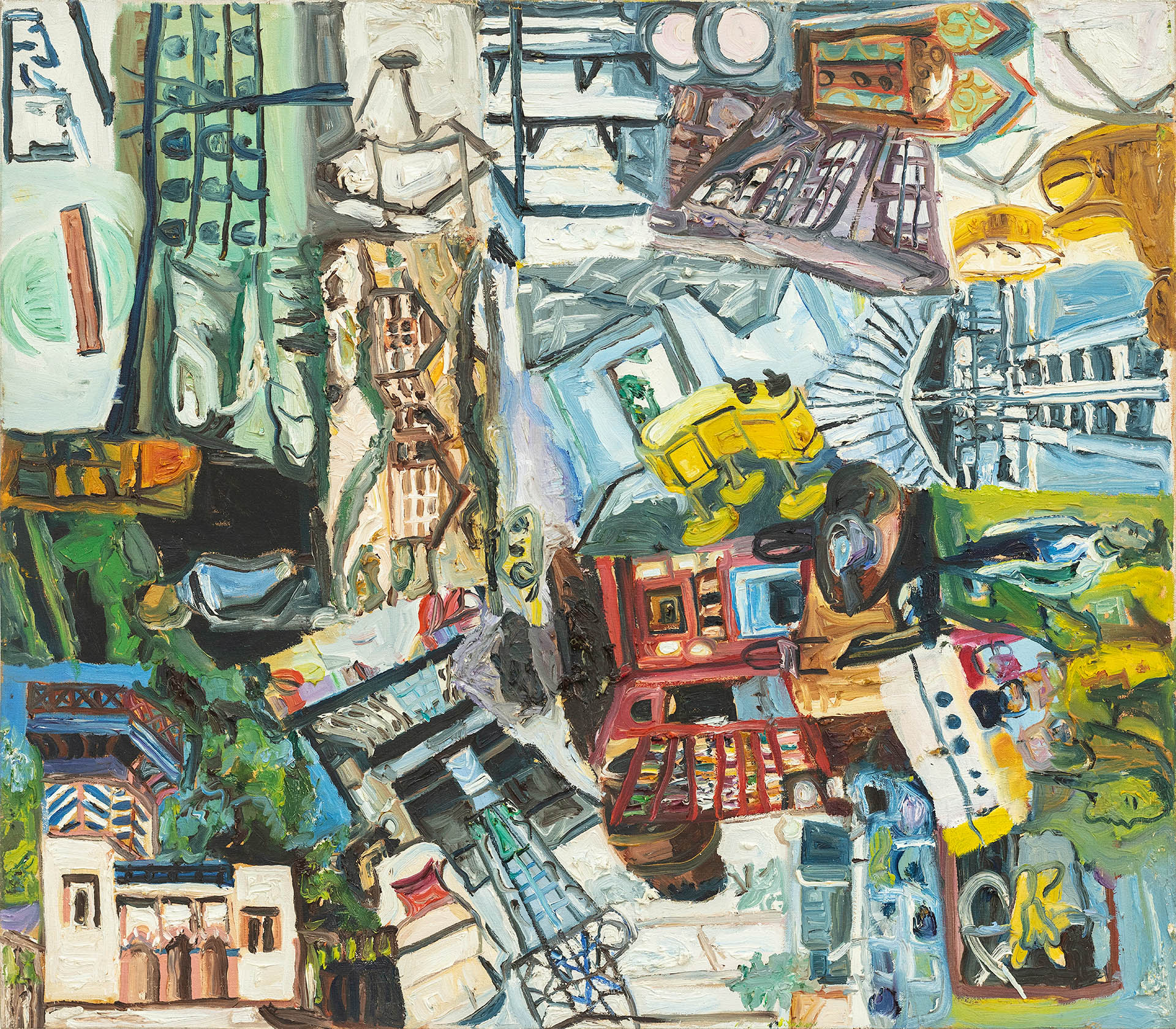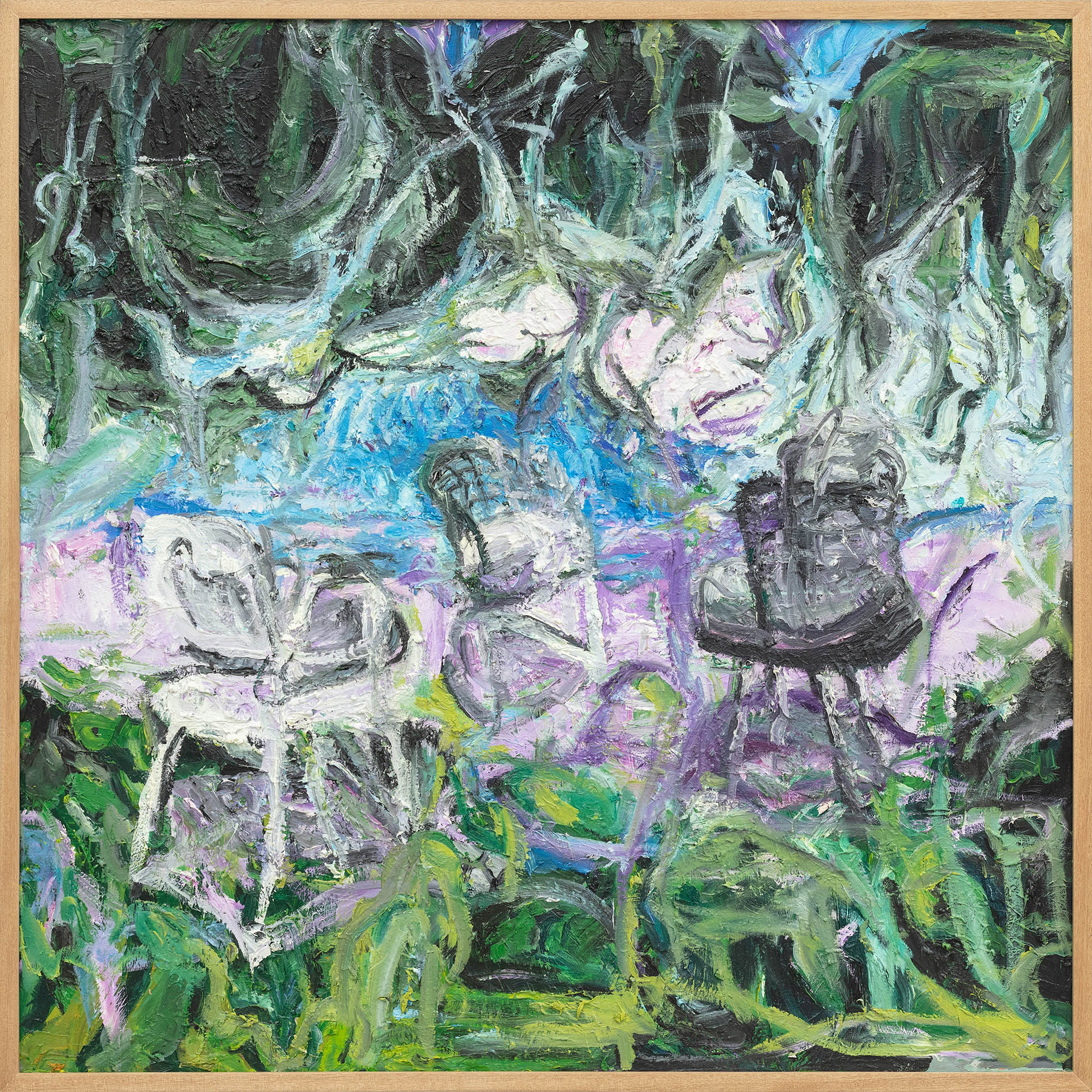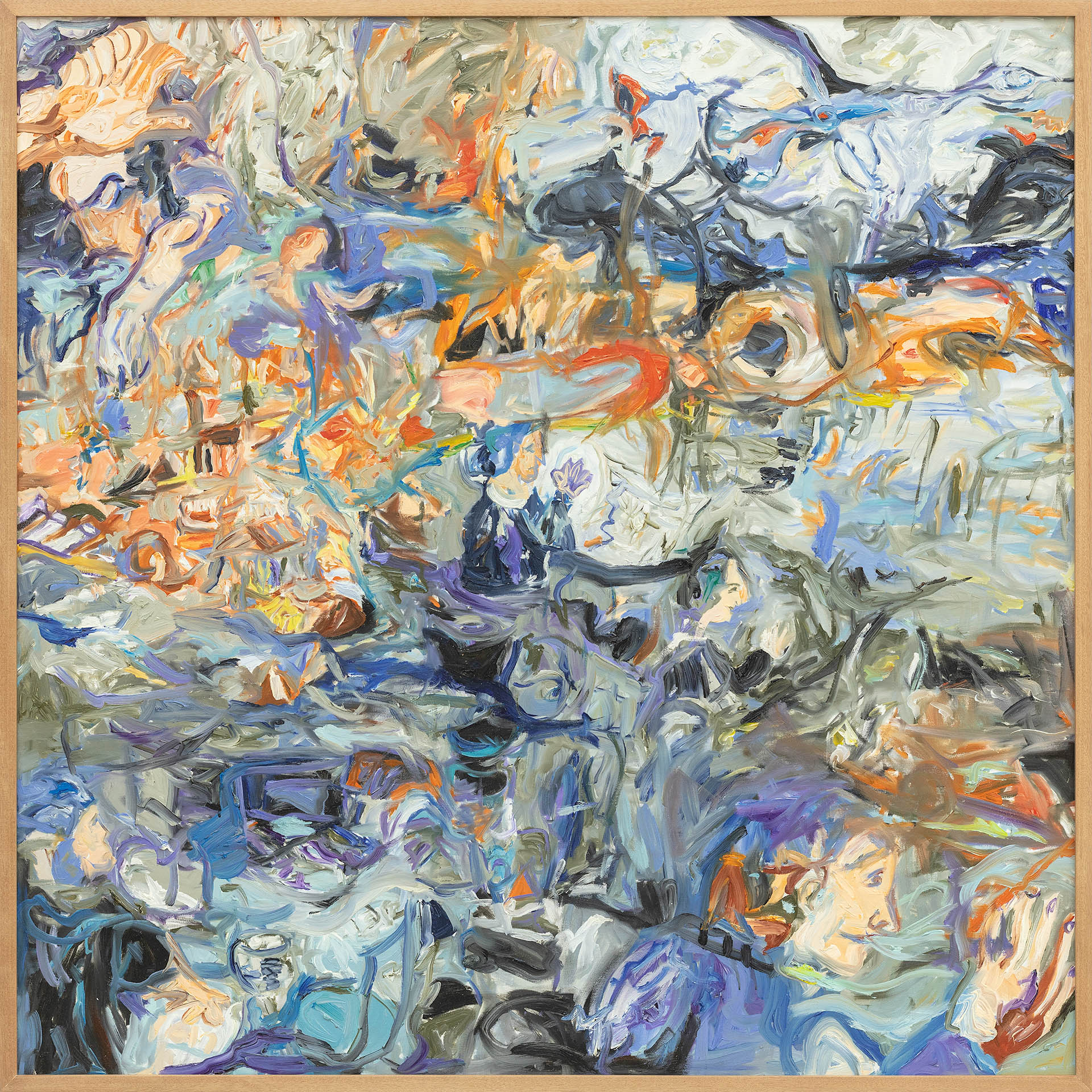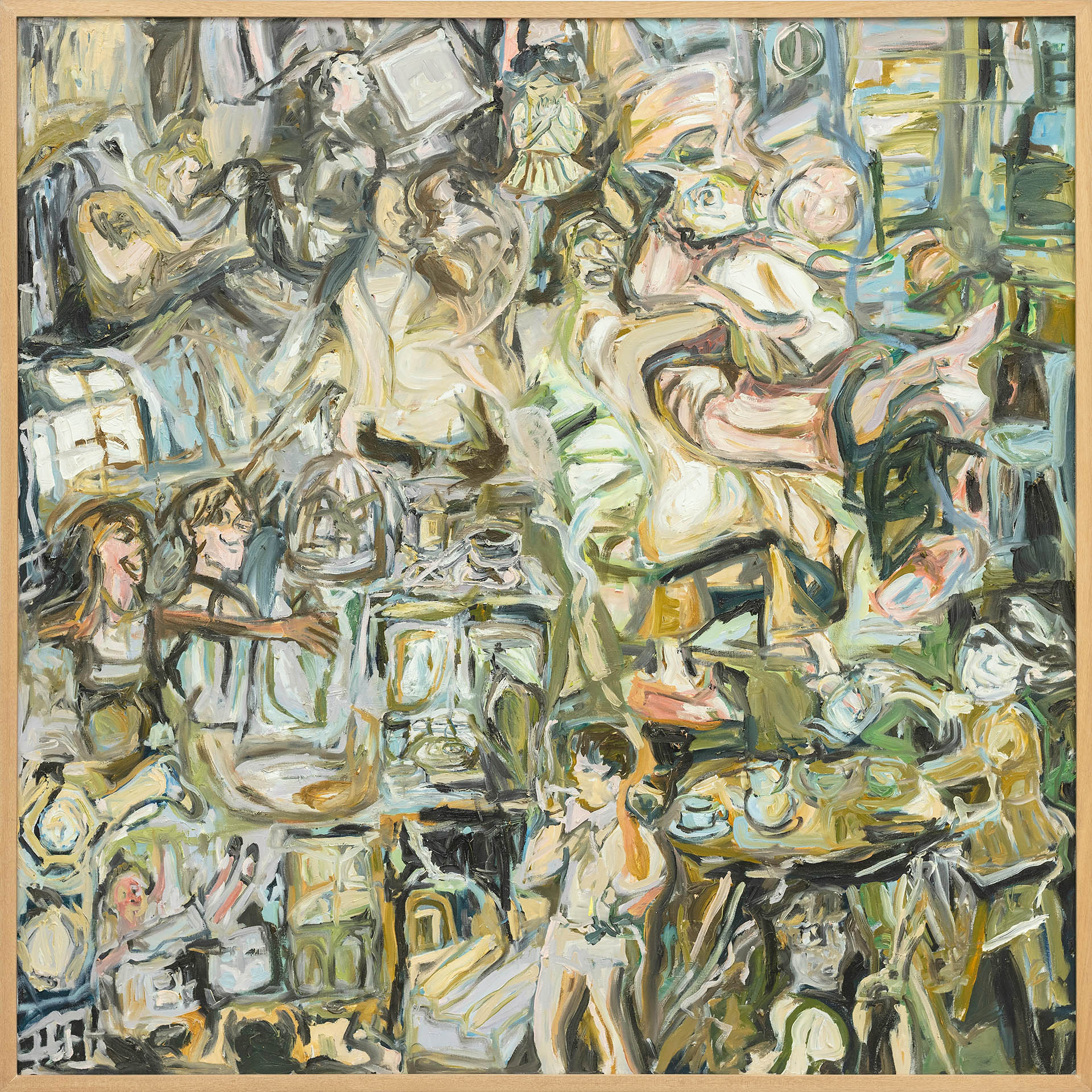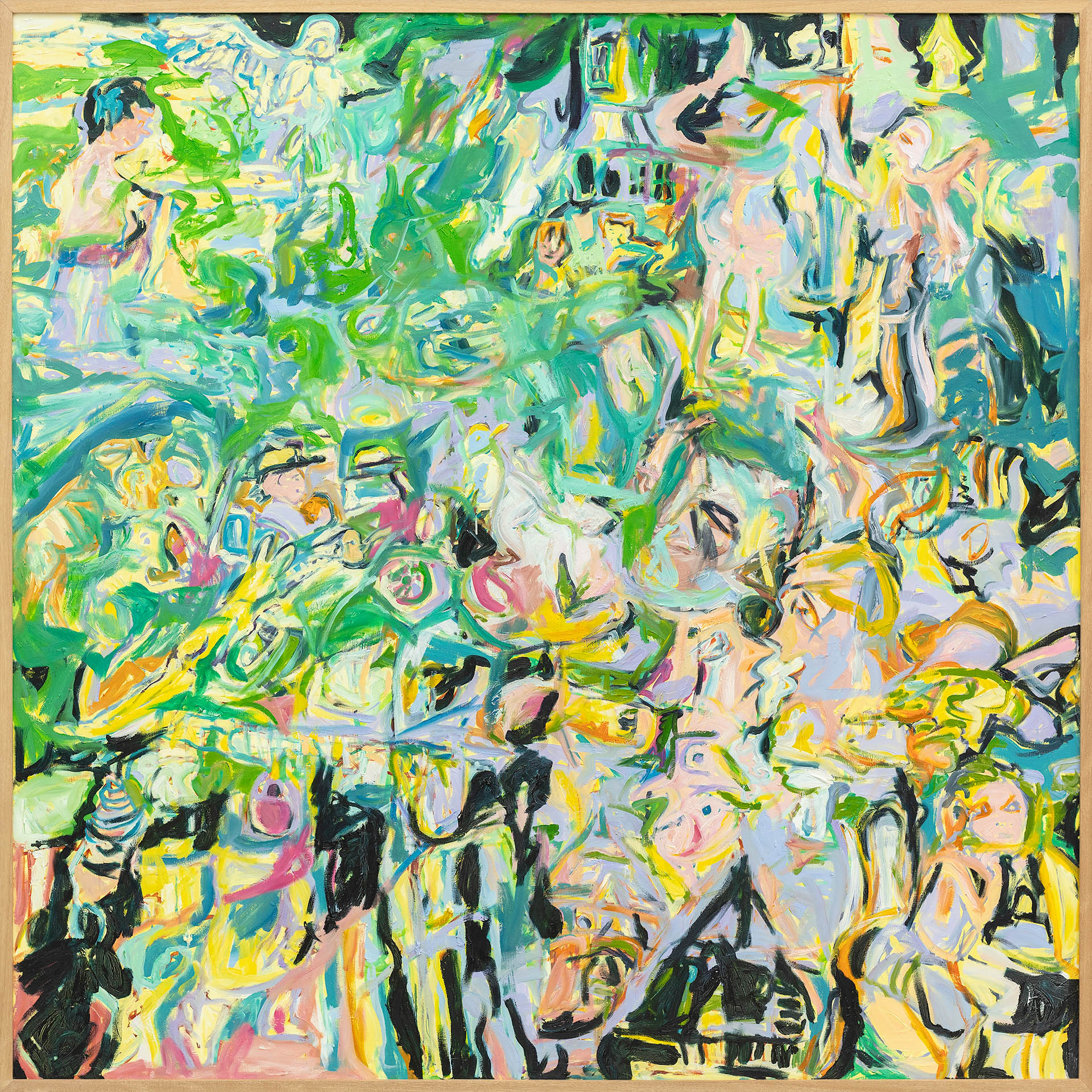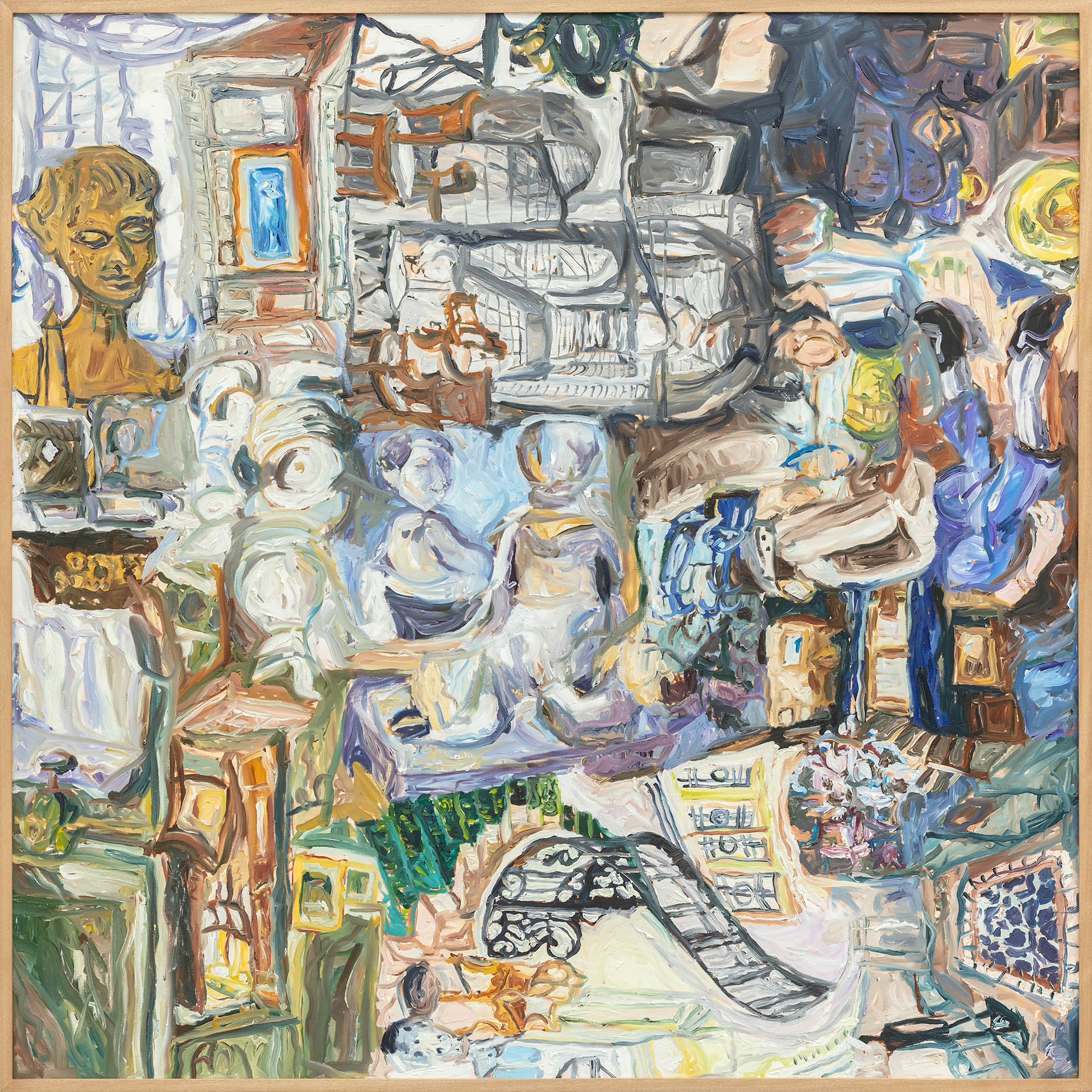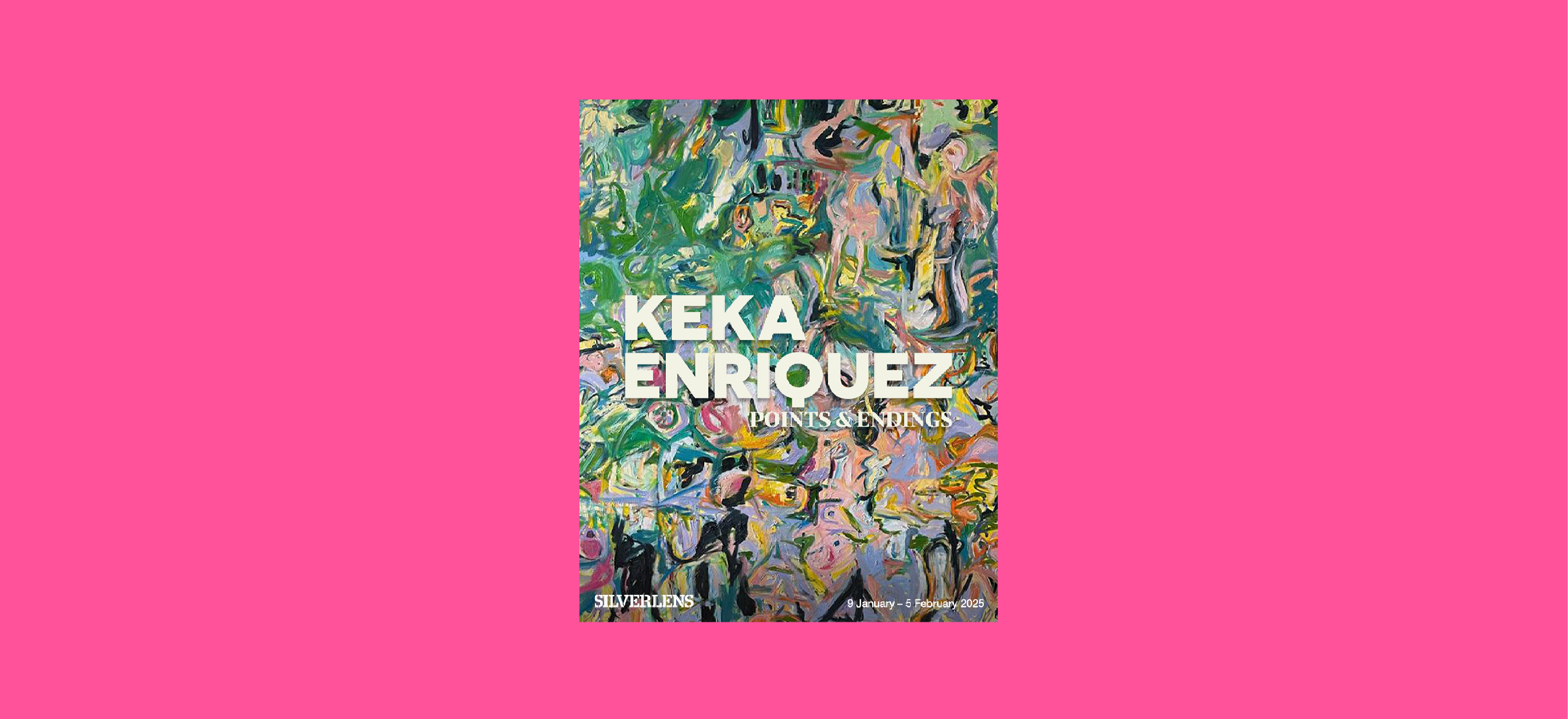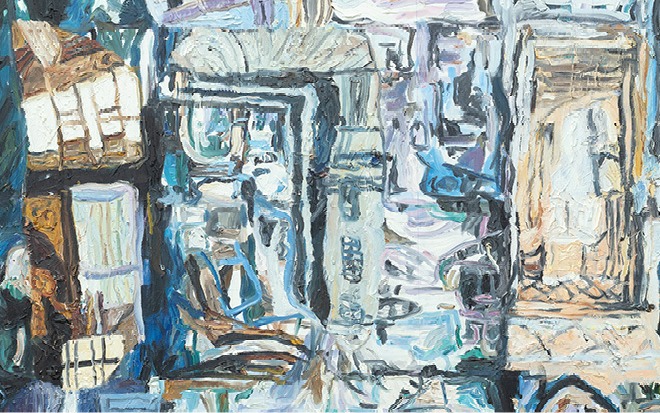
About
To kick off its 2025 Manila exhibitions, Silverlens presents Points and Endings, Keka Enriquez’s first solo exhibition in Manila since 2008, opening 9 January 2025.
To mark her highly anticipated return, Enriquez will show a selection of work from the 1980s, made in Manila, to the present, made in her home city for the last 20 years, San Francisco. Domestic interiors rendered in dynamic brushwork, bold colors, and innovative form wherein she explores the house as both a familiar place and an aspirational ideal will be exhibited alongside newly-made works of dense abstract scenes that, upon closer inspection, reveal figurative silhouettes–a man’s face, a child, a dog–among interiors and exteriors alike.
The artist spiritedly paints scenes of the house, which is experienced either as familiar or ideal. However way it is grasped and rendered, the subject comes out vividly inhabited, even if it is sometimes styled to appear in a certain way, mediated as a commodity or an aspiration from a magazine, surely meant to entice. The idea of a “dream house” might probably come to mind as Keka Enriquez affectionately, and in the process potentially critically, repeats the desire to come to belong to the tricky place of the house. In lavish paint, nimble and restless strokes, the picture builds up from the density of the domestic furniture to the armature of painting. This is not to say that the rhythm is always hectic. There can be a sense of quiet, too, as if the details of dwelling serve as accoutrements of a still life. But the general atmosphere is one of mingling, if not a massing of pigment and its luster, akin to collage or the modernist experiment of breaching the interior and the environment. The latter come together in the imagination of the artist so that the heady mixture ultimately proposes an abstract condition, or an articulation of abstraction in which the flatness is the thickness. Here, paint no longer alludes to the object or objectifies the subject: it confuses the eye that expects a reconciled home and is finally led to the telling remains of an always eventful day, which may well speak of history, repressed or becoming.
In creating more contexts for the oeuvre of Keka Enriquez besides the formal aspects of her works, we can think about the following nodes in the network of relations within which she circulates.
First is the enterprise and apparatus of painting as a technology of making things appear on two-dimensional space. To what modality of painting do we assign the efforts of Enriquez? In other words, what kind of contemporary painting is she engaged in and to what history of painting can it be traced locally and globally? The relay between expressionism and conceptualism may begin this discussion, as perceived in her intimacy with paint, the energy of her stroke, the all-overness of her inscription, and the materialization of the picture as painting. What is the relationship between these two propositions of doing painting, the expressionist and the conceptualist, as an international visual language and a specific articulation of the art in a place like the Philippines, which includes its diasporic geography and therefore cannot be entirely insular?
Second is the question of Enriquez being a woman painter. How does the moment of gender shape the moment of painting as well as the moment of the Philippine? How is the aesthetic underlying the painting of the woman engendered and thus politicized? It must be assumed that the forces at work in the production of a particular form, which encompasses the sexual subjectivity of the artist, inform each other.
Third is the situatedness of Enriquez as a migrant in the United States. How does this condition rearrange expectations of her practice that evolved in the Philippines since the eighties and how does it transfigure a language that is highly mediated by both the Philippine experience and her current milieu across the Pacific?
These intersecting nodes generate the painting of Enriquez today, offering opportunities of recognition of her stature as an artist and honoring the quality that inheres, or is internalized, in the series of movements in her artistic life that is similarly the series of maneuvers in the devices of painting.
Keka Enriquez (b. 1962, Manila, Philippines; lives and works in San Francisco, California) is a distinguished contemporary artist celebrated for her experimental and expressionistic paintings. Influenced by the Neo-expressionist movement, Enriquez’s work is characterized by textured brushstrokes, bold colors, and innovative form. Renowned for her exploration of domestic interiors, traditionally the domain of women, Enriquez subverts the masculine art movement to delve into the psychological and social dimensions of home. Through her manipulation of pigment, texture, and surface, she retrieves and reshapes the multi-layered experience of the homescape while contemplating the significance of painting as a whole. After twenty-five years of working within her San Francisco community, Enriquez returned to the art world in 2023. A showcase in 2024 will unveil a series of new oil on canvas paintings highlighting the evolution of her practice.
Enriquez embarked on her artistic journey in the 1980s under the mentorship of Roberto Chabet, widely acclaimed as the father of conceptual art in the Philippines. The artist graduated with a Bachelor of Fine Arts in Painting from the University of the Philippines. She has exhibited her work in the Philippines, the United States, England, Australia, Taiwan, Hong Kong, and Malaysia. In 1994, she was a recipient of the Cultural Center of the Philippines’ Thirteen Artists Award. Under a grant from UNESCO, she obtained her Masters degree in Fine Arts at the Norwich School of Art and Design, England in 1995.
Installation Views
Works
